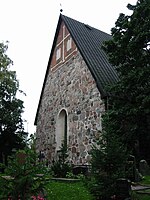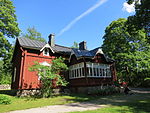Espoon keskus

Espoon keskus (Finnish for Espoo Centre, Swedish: Esbo centrum) is the central district of Espoo, the second biggest city of Finland and the administrative centre with the city hall of Espoo. The areas of Kiltakallio, Kirkkojärvi, Saarniraivio, Suna, Suvela and Tuomarila belong to Espoon keskus. To the east, Espoon keskus borders the city of Kauniainen, an enclave within the city of Espoo. Even though Espoon keskus is located at the approximate geographical centre of the city, it is not a major population or economic center. In fact, Espoon keskus has had a negative reputation among the people living in Espoo in the past. At the moment the city of Espoo is making a serious effort to give Espoon keskus a new look. A new upper secondary school and a swimming hall have been built, the general appearance of the area is being lifted and new road building projects are about. Many people from the Finnish capital area, mainly from Helsinki, view the district of Tapiola and its environs as the real commercial centre of Espoo, even though they are very close to the city border with Helsinki.
Excerpt from the Wikipedia article Espoon keskus (License: CC BY-SA 3.0, Authors, Images).Espoon keskus
Kamreerintie, Espoo Espoon keskus (Vanha-Espoo)
Geographical coordinates (GPS) Address Nearby Places Show on map
Geographical coordinates (GPS)
| Latitude | Longitude |
|---|---|
| N 60.204 ° | E 24.654 ° |
Address
Kamreerintien Pysäköintitalo
Kamreerintie 4
02760 Espoo, Espoon keskus (Vanha-Espoo)
Finland
Open on Google Maps






